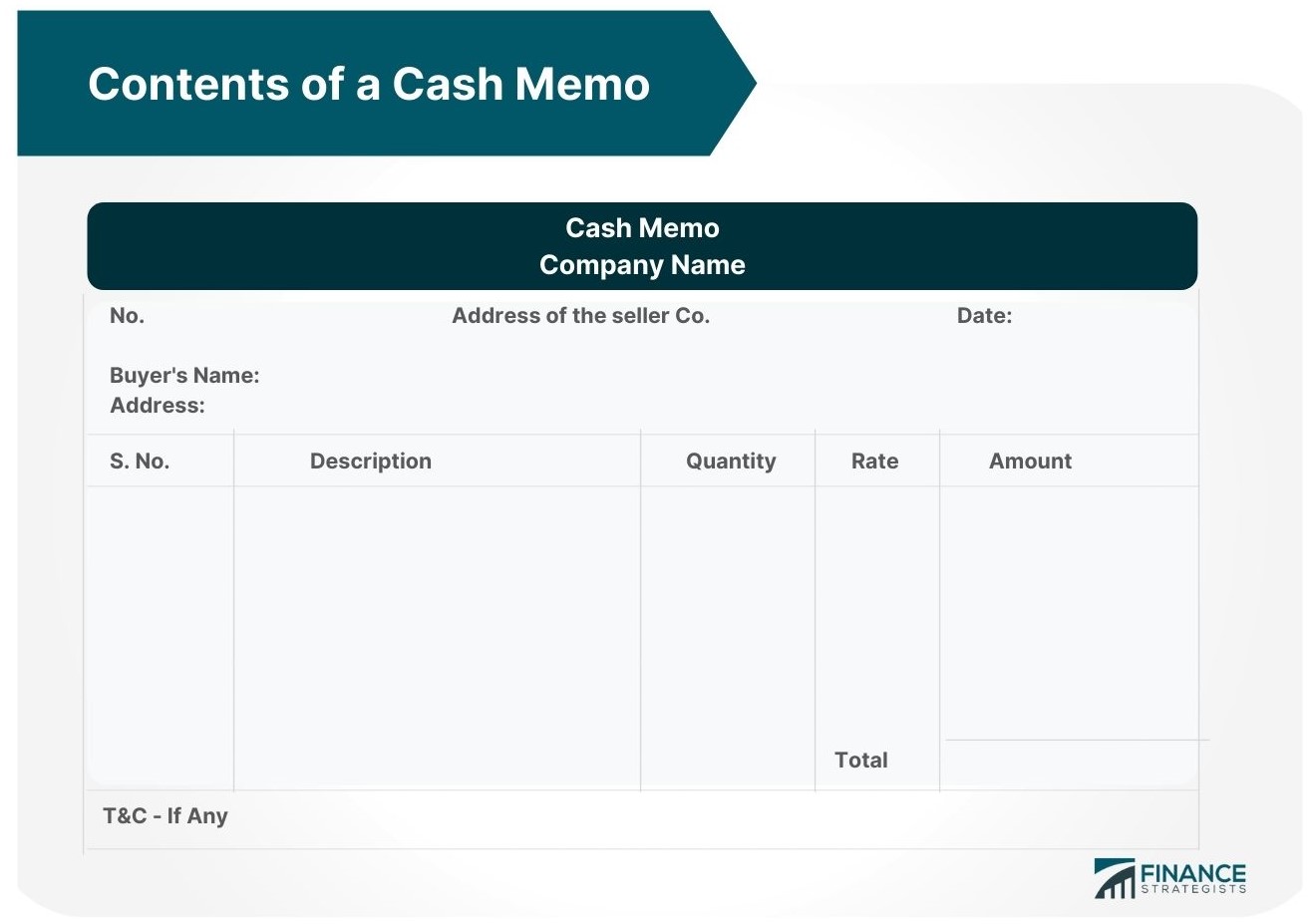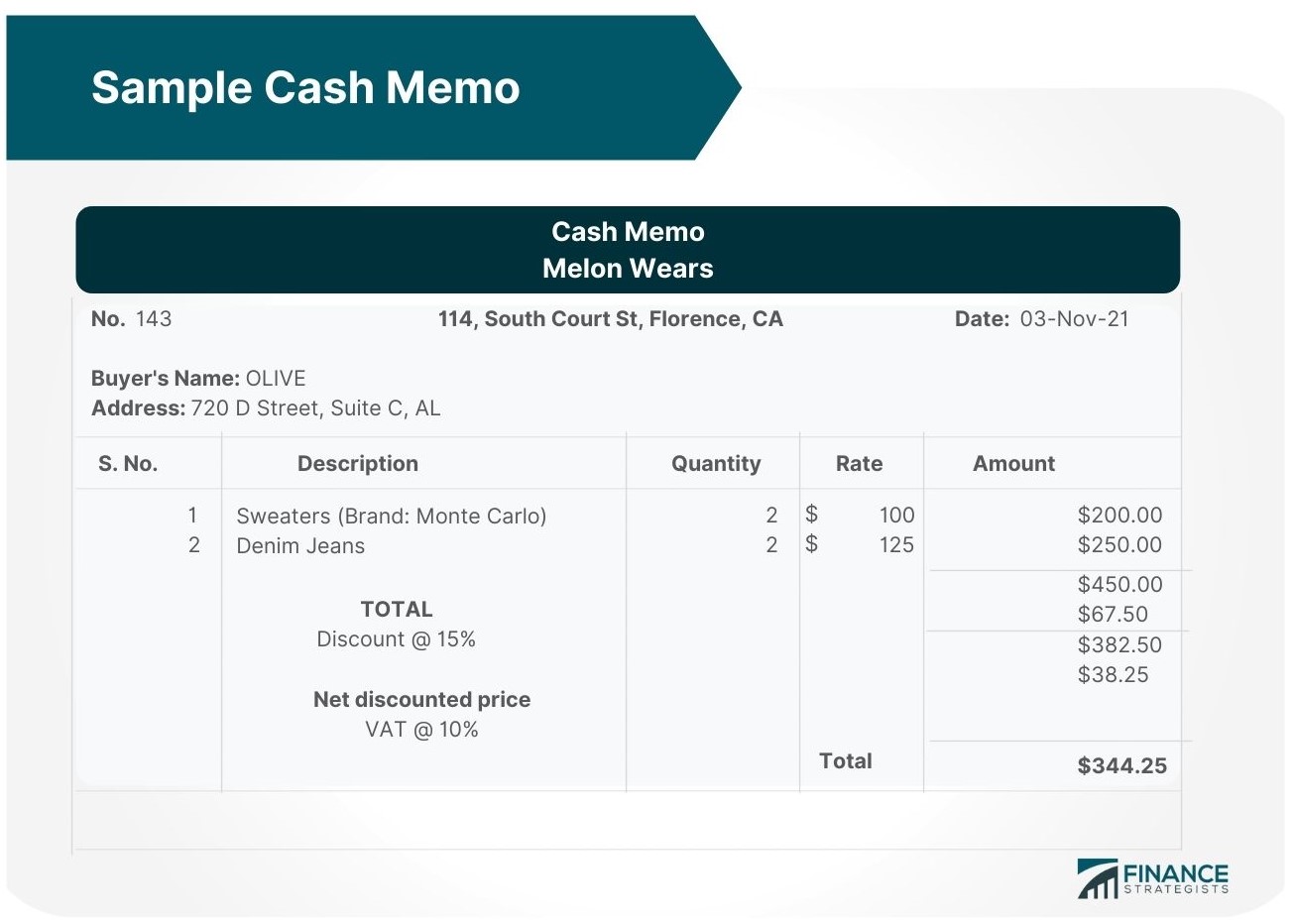A cash memo is a document that tracks the accounting of receipts and payments. Cash memos are used to track accounting for both business-to-business transactions, as well as business-to-consumer transactions. If you are running a small business, chances are you have to make cash payments or receive cash payments on a regular basis. Creating your cash memos can be an easy way to keep track of all this accounting data. Creating cash memos can be a valuable way of accounting without losing any vital information or having the accounting process bogged down in technicalities. It is also very simple to do with a minimal time commitment. Below are some of the benefits of creating a cash memo for accounting purposes: The typical contents of a cash memo include: Typically, accounting personnel manages cash memos who use the information received from the document in accounting software programs or spreadsheets. However, business owners can also manage it if they have an accounting background and properly understand how to fill out the cash memo. Cash memos are extremely important for accounting purposes. Mia owns a boutique called Melon Wears. Olive, one of the regular customers, visits the shop and buys two pairs of sweaters of Monte Carlo’s brand for $100 each, two denim jeans for $125 each. Mia offers a 15% discount to Olive and charges 10% VAT on the sale transaction. Mia prepares a sample cash memo for the transaction mentioned above. You can also add a stamp of your company’s logo at the bottom left-hand corner. You should complete this cash memo after accounting for every transaction that was made using cash or other forms of payment in order to properly manage accounting processes and avoid accounting discrepancies.Cash Memo Definition
Benefits of Using Cash Memos
What Are the Contents of a Cash Memo?

Who Should Be Responsible for Managing This Document?
Examples of What They Look Like and How to Fill One Out

How to Create a Cash Memo?
1. Write the date of the transaction on the cash memo.
2. Write the name and address of your business in the top right-hand corner, underline it. Make sure all accounting transactions are accurate to avoid any accounting discrepancies later on.
3. Fill out the information in Item number one by writing down “Cash Payment” or “Receipts” depending on how you are accounting for the transaction.
4. Fill out item number two by writing down all information related to the purchase or sale of goods that occurred during this accounting period (for example Olive, Monte Carlo).
If there is no specific name involved in the exchange between your business and another individual/company write “anonymous” under their name.
5. Fill out item number three by writing down the number of goods that were purchased or sold during this accounting period (for example, two sweaters and two pairs of jeans).
6. Write down in Item number four all price information related to the transaction (for example, 100 for each sweater, 125 for each denim jeans).
7. Write down in Item number five the total amount of cash paid or received during this accounting period (for example, $450).
8. Fill out items number six and seven by writing down all relevant information related to your business’s accounting process.
9. Fill out the last section by writing down your signature (or company name) followed by your contact information like phone numbers or email address in case there is any need to get in touch with you about this transaction.
Cash Memo FAQs
Yes, it is. Cash memos are accounting documents that keep track of all transactions made using cash or other forms of payment for accounting purposes. These include sales and purchases in your business like purchasing goods from another company or selling them to customers, receiving money as payments, and paying bills.
No, it is not. Receipts are accounting documents that indicate payment for goods and services to suppliers or other companies, while cash memos record accounting transactions involving sales, purchases, and receiving payments from customers after providing products/services in your business.
Cash memos serve as accounting documents that record all accounting transactions made using cash or other forms of payment to keep track of and manage accounting processes. This way, you can avoid accounting discrepancies that could lead to problems in your business, like getting into financial trouble with creditors if they occur.
Cash memos are accounting documents that help you keep track of accounting transactions made using cash or other forms of payment to manage your accounting processes.
Cash memos can be created by accounting staff, bookkeepers, or even the business owners themselves.
True Tamplin is a published author, public speaker, CEO of UpDigital, and founder of Finance Strategists.
True is a Certified Educator in Personal Finance (CEPF®), author of The Handy Financial Ratios Guide, a member of the Society for Advancing Business Editing and Writing, contributes to his financial education site, Finance Strategists, and has spoken to various financial communities such as the CFA Institute, as well as university students like his Alma mater, Biola University, where he received a bachelor of science in business and data analytics.
To learn more about True, visit his personal website or view his author profiles on Amazon, Nasdaq and Forbes.











